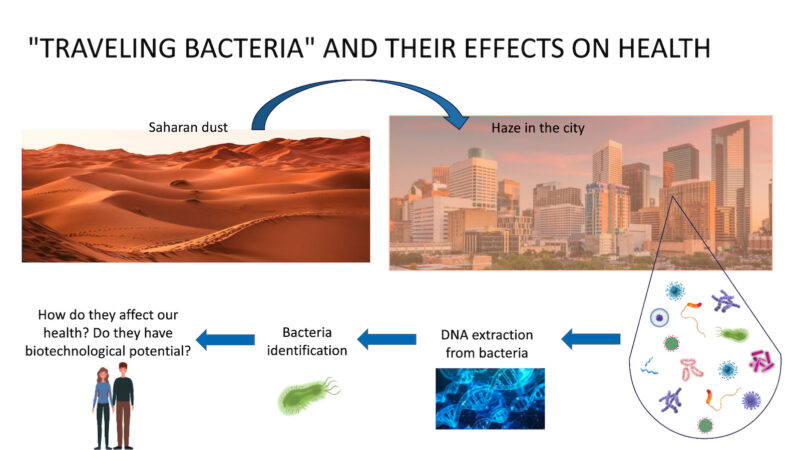
Atmospheric pollution is the presence in the air of chemical, physical or biological agents that alter its natural characteristics. It is currently one of the greatest environmental health risks.
Desert dust outbreaks lead to increased concentrations of particulate matter in the atmosphere. These dust particles have been shown to be an excellent vehicle for the transport of microorganisms. This is a cause for concern, as the particles can travel thousands of kilometers for several weeks, crossing oceans and continents, thus facilitating the spread of infectious agents.
Our objective is to determine the presence of these traveling bacteria in samples of Saharan dust, collected in the Canary Islands, a region particularly affected by calima or dust rain events. To do so, we extract the genetic material (DNA) from the bacteria and then purify it; in this way we can identify the bacteria and find out whether they have already been described or if, on the contrary, they were previously unknown.
Once identified, we can test their resistance to extreme conditions, such as UV light or low temperatures, in order to find out more about their possible impacts on health and their possible biotechnological potential.
Keywords: microorganisms, dust particles, haze, health, biotechnological potential.
Directed by: Ana del Moral García
Leave a Reply